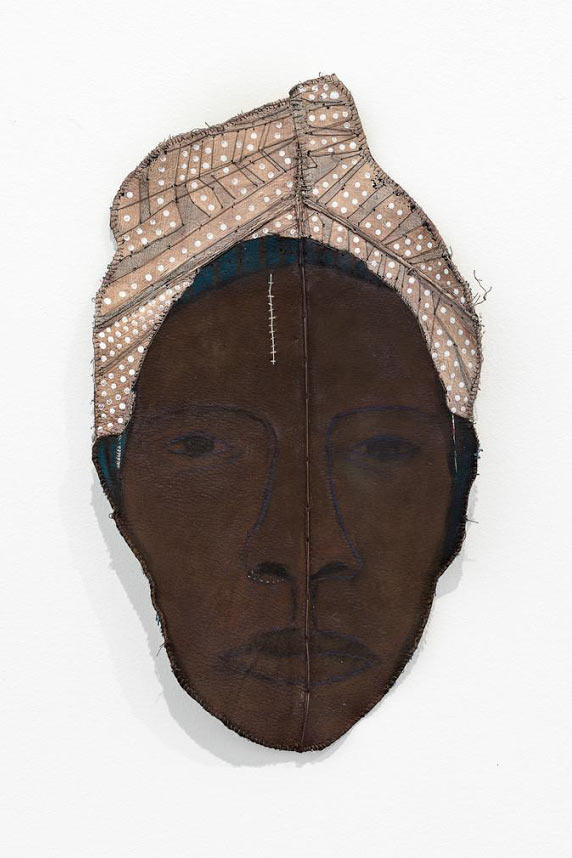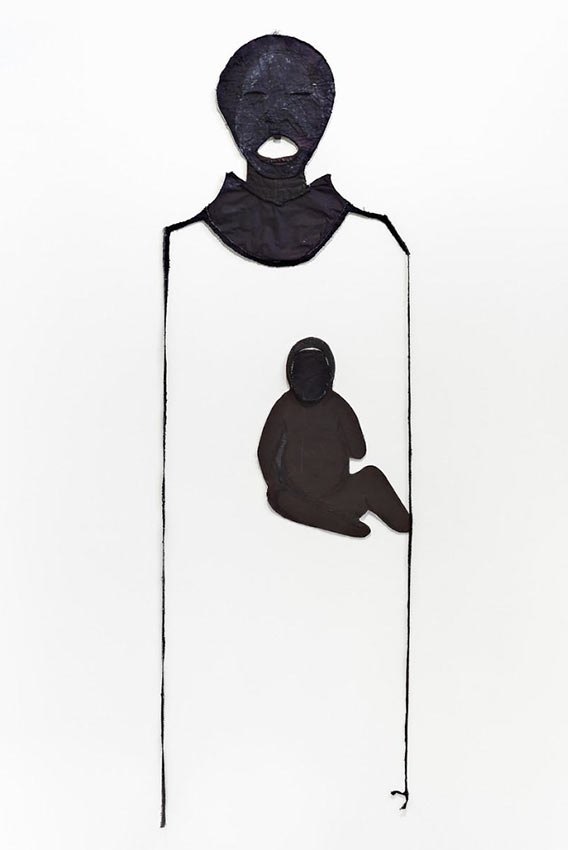Alicia Henry was drawn to art as means of better understanding the world around her. As a child, she learned to paint, draw, and even garden to express her creativity and explore her imagination. From an early age, she realized the profound power art gives the artist. “The visual arts are a form of communication, a gateway that allows our ideas, thoughts, and feelings to be known,” she said.
Henry later delved into needlecraft – sewing, embroidery, knitting, crochet, hand-hooked rugs. This early interest in fabrics is evident in her work today. She often paints on fabric such as felt or burlap and stitches pieces together to create layered dimensions. The result is a tactile element that gives her 2D figures life and depth.
Looking back, Henry realizes that she was drawn to the power of the human figure from an early age. Intrigued by human interaction, she began to develop and interest in the concept of the individual and community identity. In her work, she continues to explore the complexities and variations of this subject. Instead of traditional portraiture, many of her pieces are reminiscent of masks, evoking the conflict between our identity and the exterior façade we seek to project. Though many of her pieces appear impassive, a poignantly human presence waits beneath the surface.

A native of Illinois, Henry received her BFA at the School of the Art Institute of Chicago. She went on to earn her MFA at the Yale University Skowhegan School of Painting and Sculpture. Since then, she has received numerous awards and her work has been exhibited across the country. Henry currently teaches art at Fisk University.
Henry emphasizes that the creative process is unique for each artist and even for each piece – “there is no prescribed formula,” she said. An artist must be willing to experiment with different media and procedures to best express the idea. Henry said her work usually evolves through a few basic steps, though in no specific order. It starts with an influence from something she sees, reads, hears, or experiences, and an idea flows organically from that source. Then she moves on to preliminary sketches using a pen, sharpie, or pencil. From there, Henry decides which materials to use in order to bring her original idea to fruition.

The artist’s current work continues to address the intricacies of human connection, specifically familial relationships and societal differences. Considering the effects of these interactions, Henry responds to the themes of beauty, body, and identity. With particular attention to the divisions of age, class, gender, nationality, and race, she examines how people navigate these issues. In her most recent work, she uses the motif of the paper doll to question the stereotypical and idealized figures propagated by the media. “My goal is to make visible that which still often goes unseen,” Henry said.
—Sarah Russell, Gibbes Museum of Art Summer Intern
Top image: Brown, Red, White, and Blue, by Alicia Henry; Acrylic, cotton, linen, leather, wool, felt, fabric/synthetic blend, dye thread, dye, graphite, and colored pencil; 13′ x18′ wall installation (variable); courtesy of the artist.
Published August 4, 2016

